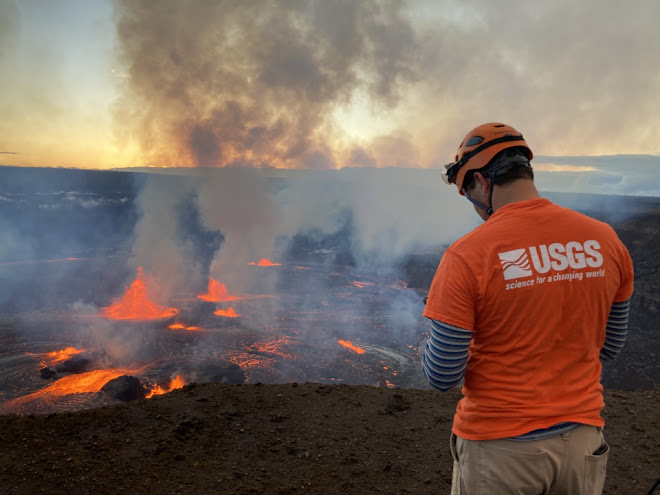A BILL AIMED AT SUPPORTING STEWARDS OF STATE PARKS by exempting nonprofit parking and concession operations from bidding requirements to operate in parks was signed into law by Gov. Josh Green on Thursday. A statement from his office said it establishes "a path toward mitigating overtourism impacts on state parks."
The exemption under this bill applies to certain operations supported by nonprofit corporations within state parks, that are designated by the Board of Land & Natural Resources as environmentally, culturally, historically, or operationally unique. The exemption is modeled after the existing exemption in state law for certain county zoos, botanical gardens, and county parks.
The statement says that "Cooperative agreements for stewardship and management with private partners, including nonprofit organizations, have shown to be an effective management tool to increase the quality of experience and resource protection in state parks. The new law solidifies future management of our state parks through community partnerships, to protect our natural and cultural resources and enhance the quality of experience of visitors and residents statewide."
While not in the lineup for immediate use of the new law, the only state park in the Kaʻū area is on the border with South Kona. It is Manukā State Wayside within Manukā Natural Area Reserve, just north of Ocean View. It offers a two mile hike on Manukā Nature Trail. The surrounding Manukā Natural Area Reserve is comprised of 25,000 acres on the flank of leeward Mauna Loa with subalpine shrublands and forests, mesic montane kipuka forests, wet montane forests, lowland mesic forest and lowland dry forests, with miles of coastline. It also includes pioneer vegetation types on recent lava flows, and unsurveyed lava tubes, along with concentrations of native Hawaiian bats, a rare low grassland and anchialine pools.
In addition to this state park, there are numerous state forests, some coastal land and land used as pasture in Kaʻū.
To read comments, add your own, and like this story, see facebook.com/kaucalendar. See latest print edition at kaucalendar.com, in the mail and on stands.
THE ALERT LEVEL FOR KILAUEA VOLCANO has been lowered by Hawaiian Volcano Observatory from WARNING to WATCH. with initial high effusion rates declining and no infrastructure threatened. Associated hazards are confined to the closed area established by Hawaiʻi Volcanoes National Park.
HVO also lowered Kīlauea’s aviation color code from RED to ORANGE with the lowering of the threat of significant volcanic ash emission into the atmosphere outside of the hazardous closed area within Hawai‘i Volcanoes National Park.
The eruption plume continues to rise to the base of the inversion level at about 8,000-10,000 feet above sea level as it did on Wednesday. The plume is largely composed of sulfur dioxide gas and minor volcanic particles, but in lower concentrations due to the drop in effusion rate. Hazards associated with the eruption are limited.
USGS reports that Kīlauea’s summit eruption is expected to continue and remain confined to Halemaʻumaʻu crater within Hawai‘i Volcanoes National Park. "HVO does not see any indication of activity migrating elsewhere on Kīlauea volcano and expects the eruption to remain confined to the summit region," says the USGS report.
HVO also lowered Kīlauea’s aviation color code from RED to ORANGE with the lowering of the threat of significant volcanic ash emission into the atmosphere outside of the hazardous closed area within Hawai‘i Volcanoes National Park.
The eruption plume continues to rise to the base of the inversion level at about 8,000-10,000 feet above sea level as it did on Wednesday. The plume is largely composed of sulfur dioxide gas and minor volcanic particles, but in lower concentrations due to the drop in effusion rate. Hazards associated with the eruption are limited.
USGS reports that Kīlauea’s summit eruption is expected to continue and remain confined to Halemaʻumaʻu crater within Hawai‘i Volcanoes National Park. "HVO does not see any indication of activity migrating elsewhere on Kīlauea volcano and expects the eruption to remain confined to the summit region," says the USGS report.
To read comments, add your own, and like this story, see facebook.com/kaucalendar. See latest print edition at kaucalendar.com, in the mail and on stands.
THOUSANDS OF VISITORS ARE FLOCKING TO SEE the lava at Kīlauea. Hawaiian Volcanoes National Park reported that during the early stages of the eruption lava fountains soared as high as 15 meters (50 feet), with bursts shooting up to 60 meters (200 feet).
"In just three hours, the lower-section of the crater was filled to the brim with lava, reaching an impressive depth of 10 meters (33 feet). The lava lake covered a massive area of approximately 370 acres (150 hectares) on the crater floor. "
On Wednesday morning, a sulfur dioxide emission rate of around 65,000 tonnes per day was measured. As time passed, the fountain heights gradually decreased to 4 to 9 meters (13 to 30 feet) high.
See the park website: https://www.nps.gov/.../nature/june-2023-summit-eruption.htm
#KilaueaEruption #LavaLove









.jpg)



